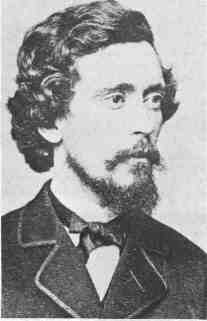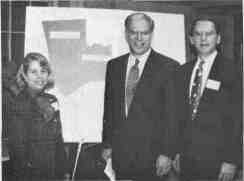Preserving Public Land The Grove
Our Prairie Walden by Stephan J. Swanson 
Robert Kennicott, an explorer and Illinois' first naturalist, accomplished much during his short 30-year life, including founding of The Chicago Academy of Sciences and contributing to the collection of The Smithsonian Institution. His father, Dr. John Kennicott, settled his family at The Grove in 1836, where he became the area's first physician and a noted horticulturist. On October 15, 1974, voters of the Glenview Park District went to the polls and approved a $875,000 bond issue referendum to save an unincorporated area known as The Grove. This action of the voters provided the funding that was needed to match state and federal grants and donations enabling a $2 million acquisition that has since exploded in value. Although the term is sometimes overused, this effort truly was grassroots citizen action at its best. What follows is the background on the saving of the Kennicott Grove and the continued efforts to improve the site, acquire and preserve the land. Beginnings Identifying the Values This grassroots group of citizens began as the "Save The Grove Committee" and consisted of ten local citizens. They soon became affectionately known as "The Frog and Fern La- Illinois Parks & Recreation * May/June 1996 * 43
44 * Illinois Parks & Recreation * May/June 1996 dies." These ladies initially discovered the following: • In 1836 Dr. John Kennicott and his family settled at The Grove. The homestead he built in 1856 still exists today. Dr. John Kennicott was the area's first physician, and a noted horticulturist, an editor of The Prairie Farmer Magazine, and a crusader for improved higher education. • Dr. Kennicott's son Robert is known as Illinois' first naturalist. His collections are still in existence today at The Smithsonian Institution. He organized The Chicago Academy of Sciences and was a noted explorer of Russian America. • The Grove was the subject of a book, A Prairie Grove, authored by naturalist Donald Culross Peattie. Novelist Louise Redfield Peattie was another Grove resident. The committee discovered much, much more about the people of the past whose roots are grounded in The Grove. These discoveries and the compilation of other information were woven into a story that truly did "Save The Grove." Saving The Grove When efforts by the state to acquire and preserve The Grove failed, the "Save The Grove Committee" successfully sought the support of the Glenview Park District. A bond issue public referendum was needed to fund the purchase of the property. The Glenview park board agreed to conduct the referendum but with the proviso that passage was up to the "Savers." Through public support and dedication to values and goals that could not be paved over, save they did—by the largest margin (89 percent yes) in local history. Local funds totalling $875,000 were assured and coupled with state and federal grants which eventually reached more than $2 million. The Grove was acquired and saved. A part of our heritage was saved. Development The Savers contributed their ideas to a long-range development plan for facilities and programs. By January 1976, the Save The Grove Committee formally dissolved to become the Grove Heritage Association. The Association committed itself to the long-term goal of now accomplishing what they had set out to do: to make The Grove a place for people to find their heritage, learn and enjoy at this serene and beautiful place. The Association raised money to develop a parking area. They raised money to restore the historic Kennicott House. More than $100,000 was raised by donations large and very small. Another $52,000 was raised in 1986 to make possible the construction of a reproduction of The Grove School House. I first read about your Kennicott's Grove
while still in England. I later published
a paper which mentioned Kennicott's
basic role in the U.S. purchase of Alaska,
and the imperative need to recover The
Grove heritage for teaching and research.
Now that I'm permanently in your country,
of course, I'm even more concerned. The
Grove mustn't be destroyed!
It's your Midwest Walden! Dr. Lewis J. Stannard of the Illinois Natural History Survey has called The Grove "a living compendium of biological knowledge rarely equaled in our nation or other parts of the world." The Association has provided thousands of hours of volunteer time as trial guides to interpret this area for children and adults. The Grove has been and will continue to be the product of a partnership between the Glenview Park District and a massive citizen effort. Four years were spent in the legal and financial ramifications for acquiring The Grove area parcel by parcel. The Zenith Corporation provided a major impetus to this acquisition by a donation of six acres of land, including Redfield Center and Kennicott House. Current Status Visitors to The Grove relive the Kennicott history through costumed docents, naturalists, public programs, tours, walking visits, lecture series and school visits that are historical, educational, cultural and recreational in value. School children experience activities and programs that enhance their appreciation and consciousness of historical times and the natural environment. Conservation easements with the Radisson Hotel, Mormon Temple, Guarantee Trust and Moore Business Forms have been established. A landscape management easement with the MacArthur Foundation was established in 1991 and has added to the protection of the site. The Grove has been a vision of its friends and supporters. The Glenview Park District will continue to partner with these citizens to achieve this vision. We have great future plans. Stephen J. Swanson is the director of The Grove National Historic Landmark for the Glenview Park District. Illinois Parks & Recreation * May/June 1996 * 45 |
|||||||||||||||

